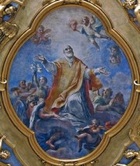Francesco Appiani was born in Ancona, and trained in Rome under Francesco Trevisani. His only known work there is a fresco of the death of St Dominic in San Sisto Vecchio. He moved to Perugia in 1743, and spent the last 50 years of his life here.
Perugia
Works in Santa Maria Nuova
Francesco Appiani was among a number of artists who executed frescoes in the nave of Santa Maria Nuova in the 18th century. Three altarpieces by him also survive in the church:
-
✴an altarpiece (1740) depicting the Madonna in glory with SS John the Baptist, Philip Neri and Philip Benizi;
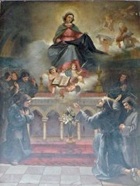
-
✴an altarpiece (18th century) depicting the Risen Christ appearing to SS Peregrine Laziosi and Juliana Falconieri; and
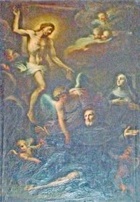
-
✴an altarpiece (18th century) of the Assumption of the Virgin.
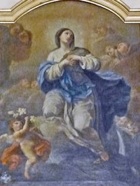
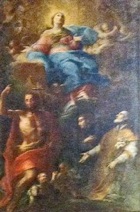
Works in San Fiorenzo
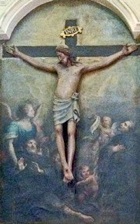
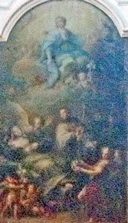
The church of San Fiorenzo contains two altarpieces (18th century) by Francesco Appiani:
-
✴The altarpiece on the 1st altar on the right, which forms the backdrop to a painted wooden crucifix (16th century), depicts:
-
•St Peregrine Laziosi (canonised in 1726), who is supported by an angel as he reveals his cancer of the leg to Christ on the cross; and
-
•the Blessed Giovannangelo Porro (beatified in 1737).
-
✴The altarpiece on the 1st altar on the left depicts the last communion of St Juliana Falconieri (canonised in 1737).
Works in the Duomo
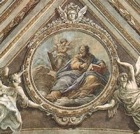
-
✴frescoes (1778) of the Evangelists in the vaults of the transepts (including St Matthew, illustrated here);
-
✴frescoes (1782-9) of the Apostles and Doctors of the Church in the vaults of the nave; and
-
✴the altarpiece (1784) St Emidius baptising Polisia, the daughter of the Roman prefect in the Cappella di Sant’ Emidio (which Bishop Alessandro Maria Odoardi established in honour of St Emidius, the patron saint of his home town, Ascoli Piceno).
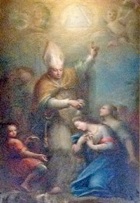
Works in San Pietro
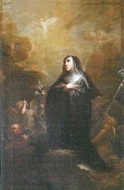
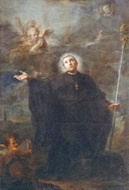
Works by Francesco Appiani in the body of the church of San Pietro include two altarpieces (1751), which depict:
-
✴St Scholastica, in the right aisle; and
-
✴St Peter Abbot, in the left aisle.
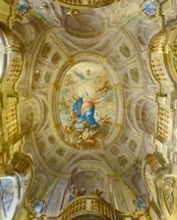
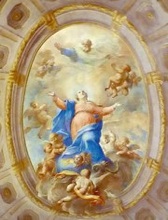
Francesco Appiani also executed the figurative content of the frescoes (1762-3) in the vaults of the Cappella del SS Sacramento, within a fictive perspectival framework by Pietro Carattoli.
Work in San Filippo Neri
Scenes from the Apocalypse (1762)
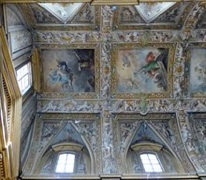
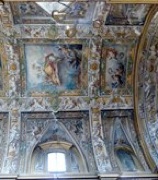
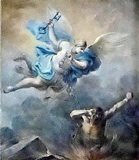
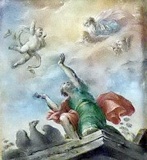
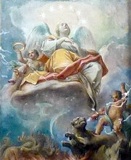
The frescoes in the vaults of the nave of San Filippo Neri by Francesco Appiani are set in a decorative frame. The three main scenes depict (from the counter-facade):
-
✴the Angel of the Apocalypse;
-
✴St John on Patmos receiving his vision of the Apocalypse; and
-
✴woman clothed with the sun, with the moon beneath her feet.
Frescoes in the sacristy (18th century)
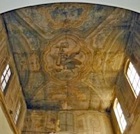
Frescoes in Palazzo Donini (1745-50)
In the 14 rooms on the piano nobile of Palazzo Donini (including the Salone d’ Onore and the chapel) are mostly attributed to:
-
✴Pietro Carattoli (fictive architecture);
-
✴Nicolò Giuli (decorative elements); and
-
✴Francesco Appiani (figurative scenes).
However, the figurative scene in the sala del caminetto (the room of the fireplace), which depicts Apollo driving his chariot of fiery horses across the sky to give light to the world, is attributed to Giacinto Boccanera. Since he died in 1746, this was presumably the first room on this floor to be decorated. The framing of the fresco (presumably by Pietro Carattoli) makes the most daring use of fictive perspectival architecture in the palace.
Frescoes (1748)
Francesco Appiani and Paolo Brizi executed these frescoes in a room in Palazzo dei Priori that is now the “anticamera del sindaco” (vestibule of the office of the Mayor).
Frescoes (ca. 1761)
These frescoes in the vaults of the newly restored church of the Monastero della Beata Colomba in Corso Cavour are by Francesco Appiani and Paolo Brizi.
Scenes from the Life of St Augustine (1762)
Frescoes (1762)
The frescoes in the vestibule of the Oratorio di Sant’ Agostino are by Francesco Appiani.
Scenes from the Life of St Augustine (1762)

Madonna della Rosario (17th or 18th century)
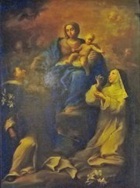
Frescoes (18th century)
The frescoes on the walls and ceiling of the Oratorio di Sant’ Antonio Abate comprise figures by Francesco Appiani set in [decorative frames ??] by Nicolò Giuli. Those on the walls are very badly damaged, but those on the ceiling are relatively well preserved.
Christ in Glory (18th century)
This panel is by Francesco Appiani is in San Severo.
Amelia
Frescoes (1746-50)
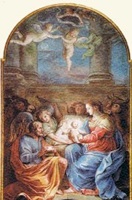
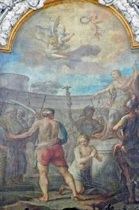
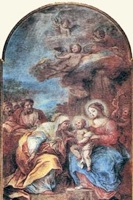
These frescoes in Sant’ Agostino depict:
-
✴three frescoes in the apse:
-
•the Nativity;
-
•the martyrdom of St Pancras; and
-
•the Holy Family with St Anne (dated 1750); and
-
✴St Augustine in glory, in the vault, signed by Francesco Appiani and dated 1746.
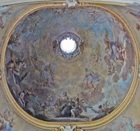
Perspectival Frescoes (18th century)
These frescoes in the vaults of Santa Monica, which depict angels carrying the symbols of the Augustinian Order, are attributed to Francesco Appiani and Pietro Carattoli.
Assisi
Altarpiece (1752)
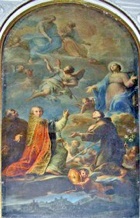
Works in Santa Maria sopra Minerva
-
✴St Philip Neri in glory and the four Cardinal Virtues (in the vault); and
-
✴the three Theological Virtues, in lunettes above the high altar.
A panel (18th century) in the sacristy there, which depicts the Crucifixion with saints, is attributed to him.
Works in Santa Maria degli Angeli
Works by Francesco Appiani that survive in Santa Maria degli Angeli include:
-
✴frescoes (1756) in the Cappella di Sant’ Antonio Abate, which depict:
-
•St Antony Abbot in glory; and
-
•the Cardinal Virtues;
-
✴frescoes (1757) in the pendentives under the cupola, which depict:
-
•the friars at the Portiuncula renouncing their possessions;
-
•the Benedictines granting the Portiuncula to St Francis;
-
•St Clare taking the habit at the Portiuncula; and
-
•St Bonaventure writing the “Legenda Sancti Francisci”, visited by St Thomas Aquinas; and
-
✴an altarpiece (1760)on the Altare di SS Pietro d’ Alcantara and Margherita da Cortona in the right transept, which depicts Christ in glory appearing to SS Peter of Alcantara and Margaret of Cortona.
Foligno
St Francis of Paola (ca. 1744)
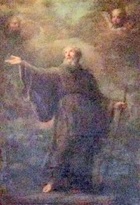
Spoleto
Martyrdom of St Pontian (18th century)
This altarpiece by Francesco Appiani is on the high altar of San Ponziano. It depicts the decapitation of St Pontian at Ponte Sanguinario.


